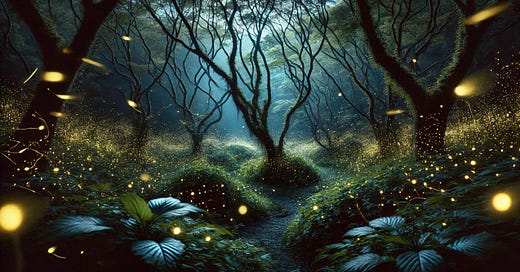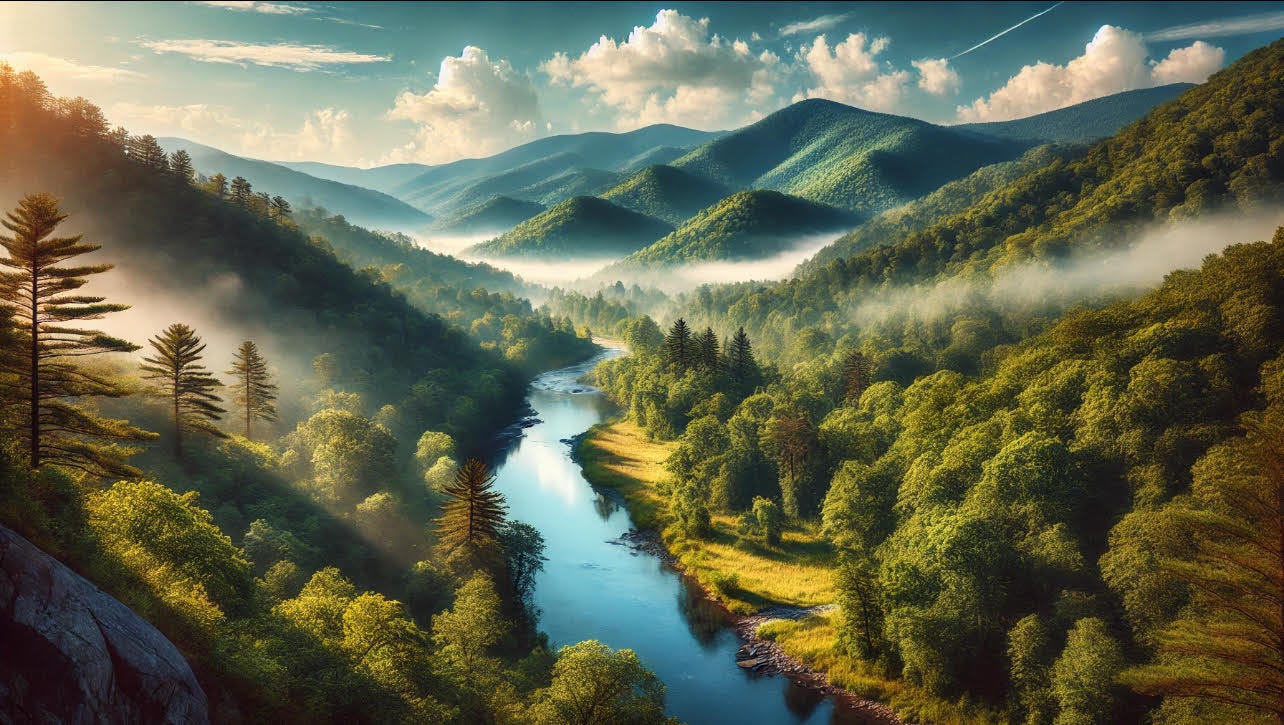I have always called them lightning bugs, but many people call them fireflies. Here in the upstate region of New York, we see fewer and fewer lightning bugs each year, but the spectacular display in the Great Smoky Mountains is a sight to behold.
Deep within the lush, verdant expanses of the Great Smoky Mountains, an extraordinary natural phenomenon occurs every summer that draws visitors from around the globe. This mesmerizing event, known as the synchronous firefly display, transforms the night into a dazzling spectacle of bioluminescence, showcasing one of nature's most remarkable light shows.
The Fireflies
The primary stars of this nocturnal display are Photinus carolinus, a firefly species found in the Appalachian region's moist, temperate environments. Unlike other fireflies that flash their lights randomly, these fireflies synchronize their flashing patterns, creating waves of light that pulse through the forest in unison.
Photinus carolinus is about half an inch long. Males emit light in short bursts while flying, and females respond with a single, timed flash from their perches on the ground or low vegetation. The synchronous flashing is believed to be a mating ritual, where males compete for the attention of females by coordinating their bioluminescent signals.
The Display
The synchronous firefly display occurs over a two-week period between late May and early June, peaking during the warm, humid nights of early summer. As dusk settles, the forest begins to twinkle with the initial flashes. Gradually, these isolated sparkles intensify and synchronize, resulting in a breathtaking rhythm of light waves that sweep through the underbrush and trees.
The phenomenon typically begins around 9:30 PM and can last for several hours, with the peak intensity occurring about an hour after the first flash. Thousands of fireflies participate, creating an immersive experience that feels almost otherworldly. The display’s synchronization can be disrupted by sudden movements or light pollution, so visitors are encouraged to maintain darkness and stillness to appreciate the spectacle fully.
Scientific Explanation
The precise mechanism behind the synchronization is still a research subject, but scientists believe it involves a combination of environmental cues and innate biological rhythms. The fireflies use their photic organs in their abdomens to produce light through a chemical reaction involving luciferin, luciferase, oxygen, and ATP (adenosine triphosphate). This bioluminescence is efficient and perfectly timed, allowing large groups of fireflies to flash in harmony.
Research suggests that the synchronous flashing could be an evolutionary advantage, helping males to stand out in the dense forest and making it easier for females to locate and select mates. The collective light display may also deter predators, as the overwhelming bursts of light could confuse or startle them.
Visitor Experience
The synchronous firefly event has become a significant attraction in the Great Smoky Mountains National Park, drawing thousands of nature enthusiasts, photographers, and scientists each year. To manage the influx of visitors and protect the delicate habitat, the National Park Service implements a lottery system for parking passes during the peak viewing period.
Visitors typically gather at designated viewing areas such as Elkmont, where they set up chairs and blankets, eagerly awaiting the onset of darkness. As the first fireflies begin to light up, a hushed excitement spreads through the crowd, culminating in awe-struck silence as the forest erupts in a symphony of light.
To enhance the experience while minimizing environmental impact, park rangers provide guidelines for visitors, including the use of red or blue cellophane covers on flashlights, maintaining silence, and avoiding the use of flash photography.
Conclusion
The synchronous firefly display in the Great Smoky Mountains is a testament to nature's wonders and the animal kingdom's intricate behaviors. This enchanting phenomenon provides a unique and magical experience for those who witness it and underscores the importance of preserving natural habitats. As one of Earth's most extraordinary natural light shows, it invites us to pause, observe, and marvel at the delicate and interconnected beauty of the natural world.






